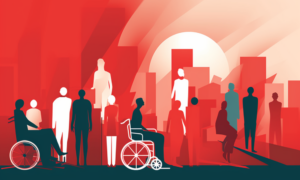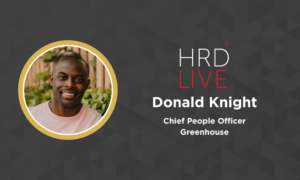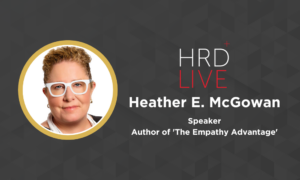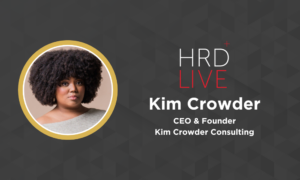5 essential tips to transform inclusion in your workplace
- 6 Min Read
How can People Leaders get inclusion right? Fiona Young, Head of Diversity and Inclusion, Hive Learning, gives 5 essential tips for perfecting your inclusion initiative.
- Author: Fiona Young
- Date published: Nov 27, 2019
- Categories
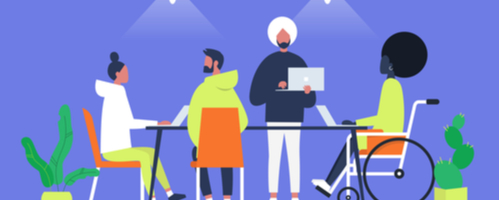
Getting a diversity and inclusion initiative off the ground is one of the biggest challenges People Leaders face today, with diversity fatigue and a lack of tangible results threatening the transformation of workplace culture. How can People Leaders get diversity and inclusion right? Fiona Young, Head of Diversity and Inclusion, Hive Learning, gives her top tips for perfecting your diversity and inclusion initiative.
Inclusion for the many, not the few
The most successful diversity and inclusion leaders are really focused on tackling inclusion at the group level, at every layer of their organization — rather than building targeted initiatives that focus on a single marginalized group.
When you focus solely on a single dimension like gender or race, you’ll unintentionally exclude others and overlook the nuances of intersectionality.
Obviously, it’s inevitable we’ll need to put in place some targeted initiatives to move the dial on underrepresented demographics — but I’ve become increasingly convinced this needs to be secondary to building a culture of true inclusion for all.
Embrace uncomfortable conversations
As a D&I leader, you have the monumental challenge of winning hearts and minds, changing entrenched beliefs and behaviours just as much as policies and systems. So unsurprisingly this work involves uncomfortable conversations – after all, if you’re calling out biased practices, you’re probably going to have a tricky conversation or two in the process.
And if you want to get the benefits of diversity of thought more broadly, you need to disagree productively and engage in creative abrasion, as Harvard’s Linda Hill says, and teach others in your organization how to do the same and why it matters.
It helps to start with a bedrock of psychological safety, where you feel like you can speak your mind and stick your neck out without fear of having it cut off, in Laura Delizonna’s words. Create an environment where people can call out a microaggression, for instance, and where doing so isn’t combative or career-killing, but rather said and heard with the mindset that we’re all flawed, and we’re all learning. This creates real opportunity for individual growth, as well as broader cultural change.
Move from unconscious bias to conscious action
Too often corporate D&I training is face-to-face, one-off and focused solely on unconscious bias. Besides being expensive and tough to scale, there’s a raft of research that shows this approach doesn’t work — especially when it’s not followed up with really practical guidance on how to sidestep that bias.
An awareness of bias is just the starting point — we need to give people the tools to shift their everyday habits and be more inclusive every day. Being inclusive comes down to simple, everyday actions — things anyone can do in their day-to-day, ranging from who they make eye contact with as they walk through the office to how they run larger meetings or give feedback. Break inclusion down into simple steps for all the moments that matter.
Not just top-down
Anyone will tell you that wholesale commitment from the top is vital to build a diverse and inclusive organization. But change is most powerful and sustainable when it comes from the grassroots as well as the top — and really from every corner of your organization.
That’s why it’s vital for your learning initiatives to go beyond the top layer of your organization, to engage everyone in this mission. We’ve recently crafted a series of simple face-to-face session guides called Workouts to do just that — to give everyone in an organization off-the-shelf team practices to build inclusion. For instance, the first step to building psychological safety is getting to know your teammates really well, and learning how to work productively together — so one of our psychological safety Workouts asks everyone to share a “User Manual to Me” (an idea we got from Jay Desai, co-founder and CEO of PatientPing). After running this session, you’ll find you’ve built the foundation for psychological safety, you’re closer as a team, and a lot more productive — in under an hour.
Measure progress – and shout about it
Our recent research on diversity fatigue found that a key cause of this disenchantment is a lack of visibility of progress. We all know that D&I is long-tail work, where initiatives can take years to yield measurable results. But many organizations are doing amazing work they’re just not shouting enough about, or sharing the early progress of – no matter how small. This lack of visibility inevitably leads to frustration and diversity fatigue.
Consider how you tie data and meaningful metrics to your diversity and inclusion initiatives to show you’re making progress — and don’t underestimate how much you need to communicate this message again and again. There’s an interesting dynamic between data and communication — how transparent you are as a business has a profound impact on how your people feel about you and your diversity and inclusion efforts. Find a way to show it, then shout about it.
What is Hive Learning?
At Hive Learning, we’re on a mission to build a more inclusive world, and as a peer learning platform, we strongly believe that tapping into the power of your peers helps you make progress faster.
Our work in the D&I space began in 2018 with the launch of Inclusion Works, a habit-forming digital inclusion program that empowers every person in every organization to be more inclusive every day. We created an interactive learning experience designed to take participants on a journey from unconscious bias to conscious action, giving them the tools to be more inclusive every day.
Because we live and breathe collaboration, our mission drove us to launch the Inclusion Works Leaders Network in November 2019 — an online community for culture leaders to swap ideas and access practical tools and fresh insights. Peers across companies, industries and countries are able to discuss and debate the hottest topics shaping the D&I space, and troubleshoot challenges to put inclusion into action on the ground, every day.
At the end of November 2019, we’re launching the Inclusion Works FRONTLINE — a series of pointed, focused and action-orientated pulse reports curated from your insights and feedback. Our goal is to uncover the root cause of your challenges and play back the most practical insights you can apply right away.
Find out more about Hive Learning and the Inclusion Works Leaders Network.






